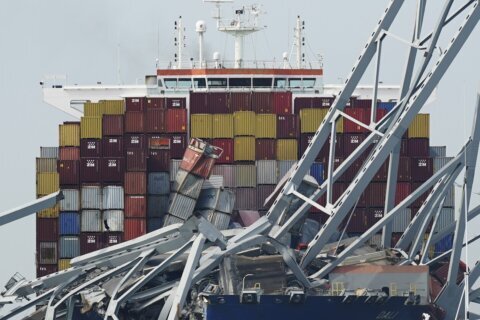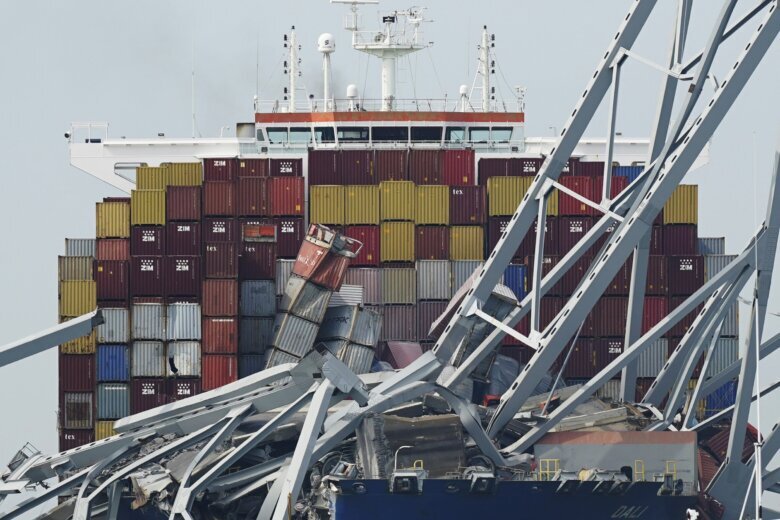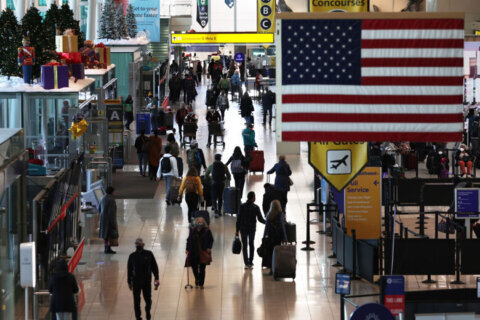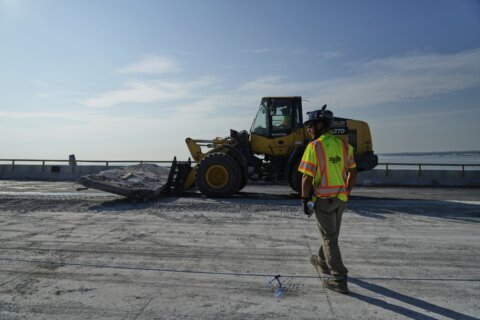
Body-worn camera video of the initial aftermath of the March 26 collapse of Baltimore’s Key Bridge has been released to the public, revealing some of the sights and sounds of one officer’s early response.
The video, obtained by ABC News through a Freedom of Information Act request, comprises nearly two hours of footage from the camera of a Maryland Department of Natural Resources Officer who arrived on the scene approximately an hour after the cargo ship Dali slammed into the bridge, bringing it down and killing six construction workers who had been on it.
The video begins while the officer is at the wheel of his police car, sirens blaring and blue lights flashing.
The dashboard shows the officer reaching speeds up to 80 miles per hour as he races toward the marina, where his police boat is docked.
At the marina, the officer bolts from his car and dashes down the wooden pier, passing numerous empty boat slips until he reaches the police patrol boat.
He promptly boards the boat and checks the engines before taking the boat controls. The camera captures the instrumental panel flashing to life in the darkness, while the engines start up.
The officer then methodically unties the boat — first the stern and then the bow. With the boat’s twin engines humming, he’s on his way to the disaster. The darkened divide over the water where the steel bridge had come down can be seen in the distance.
Moments later, the officer arrives on the scene and blurts out measured exclamations upon seeing the deadly disaster.
“My goodness,” the officer is heard saying on the recording. He promptly rendezvouses with another DNR police boat, and the second officer provides him a briefing of the search for victims that is underway.
“We got one out of the water … there’s supposed to be another four somewhere, they were in a vehicle that went down … we got dive units that are coming,” the second officer said.
The newly-arrived officer is warned about the risks of bridge debris that lie dangerously on and beneath the water.
The officers plan a search strategy while awaiting divers from the Maryland State Police.
“How much debris is on the other side? Is it bad?” the arriving officer inquires of two other boat-borne officers on the scene.
“Some guys said there’s a lot of debris on the other side, but this side is ok,” the officer responds.
Despite the risks of debris, the newly arrived officer begins his search.
“I’ll go on the other side and start that way and go back and forth,” the officer said.
The patrol boats coordinated their radio communications channels and patrolled the waters, looking for victims.
Get breaking news and daily headlines delivered to your email inbox by signing up here.
© 2024 WTOP. All Rights Reserved. This website is not intended for users located within the European Economic Area.









